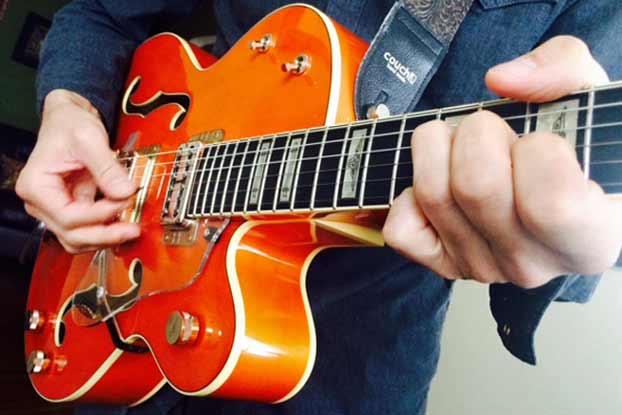Session Guitar: When to Go Direct and When to Mic in the Studio

Hello again!
Today I'd like to talk about my strategy when choosing to go direct or mic a cabinet.
As a producer and arranger, I have to consider the sonic landscape of my tracks before I start. Years of experience give me the ability to hear the whole production before I begin. Of course, I leave myself room to veer off course along the way. But I can usually see a very clear picture of what I want before I start laying down tracks.
If the recording is going to be like a puzzle with many parts coming in and out, layers of varying guitars, keys, drums, bass, backing vocals, etc., my thinking goes immediately to modeling and direct recording. Here's why.
When laying down many guitar parts, each must have its own identity. Not only with a different guitar, but with a different EQ. I find modeled or direct guitars easier to shape than mic'd guitars. The EQ is especially worth discussing.
There's a technique called shelving that is common in musical engineering. Shelving involves cutting out frequencies that get in the way of other instruments. We do this to carve out a sonic space, much in the same way playing in the pocket carves out a rhythmic space. For example, if you have a bottom-heavy guitar and a bass playing, you can run into a serious problem if both instruments live in the same frequency range but are playing opposing notes. The fix for this muddy scenario is to remove (and not in a gentle way) all the guitar frequencies below a certain point, thus creating a shelf.
I usually start at about 125 hz but can go as high as 300hz or more. In the digital realm of modeling, dramatic EQ seems to be quite easy, especially if you don't own a NEVE, TRIDENT, SSL, API, etc. high-end expensive board or stand-alone equalizer! But multiple modeled guitars are almost like direct recording synthesizers. They lay just fine in the track when shaped properly.
All the latest guitar news, interviews, lessons, reviews, deals and more, direct to your inbox!
My choices are the HD500 and DT25 head by Line 6 and the Blackstar HT40 Club for direct recording. The HD500 is obvious, but the other two have emulated outputs. I find with modelers that I can really get a focused sound that doesn't take up tons of room. Each of these sounds can add personality and interest to a song, thus adding ear candy to keep interest in a sometimes lackluster tune.
I love the punch and effects and in-your-face sound of direct recording and modelers. I also use a Universal Audio 6176 to play seriously funky or ultra-clean and chimey compressed sounds. There's nothing like it.
But what about warmth? This is where I choose to add the beauty and gooey goodness of tube amps, mic'd up close and at a distance, to open up chorus sections. I also use this for gloriously soaring lines and leads.
When I mic a guitar, I prefer to use a multi-mic setup to not only capture the entire sound of the rig but also to capture the room. I know modelers have come pretty far (and they're almost there), but they still do not reproduce a room faithfully. Certainly not with all the options we have when we consider our own room that gives a personality not found in any other—or the amp and mic placements available. However, modelers seem absolutely perfect for modern, track-heavy productions! So I use them for this.
If the production is looking for a very honest sound, like a jazz or traditional rock or country sound, I'm thinking less is definitely more! In those cases, I will isolate a guitar cab in its own room to prevent bleed and mic away. With a multi-mic setup and each mic on its own track, I can bring mics in and out for sonic interest throughout the song. Then, when I need to overdub some ear candy, I go the opposite route and use my direct rigs. This way I get the best of both worlds in any musical scenario I encounter.
Of course, there are many other factors to consider, such as panning, compression, volume, FX, etc. But that's a topic for another day.
Till next time!
Ron Zabrocki on Ron Zabrocki: I’m a session guitarist from New York, now living in Connecticut. I started playing at age 6, sight reading right off the bat. That’s how I was taught, so I just believed everyone started that way! I could pretty much sight read anything within a few years, and that aided me in becoming a session guy later in life. I took lessons from anyone I could and was fortunate enough to have some wonderful instructors, including John Scofield, Joe Pass and Alan DeMausse. I’ve played many jingle sessions, and even now I not only play them but have written a few. I’ve “ghosted” for a few people that shall remain nameless, but they get the credit and I got the money! I’ve played sessions in every style, from pop to jazz.
